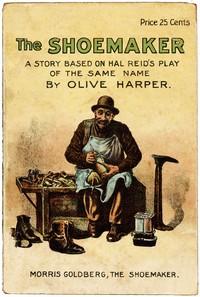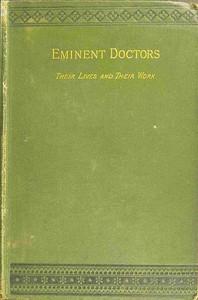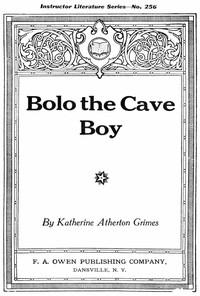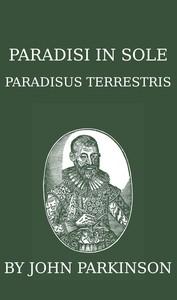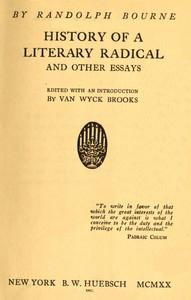|
|
Read this ebook for free! No credit card needed, absolutely nothing to pay.Words: 43034 in 20 pages
This is an ebook sharing website. You can read the uploaded ebooks for free here. No credit cards needed, nothing to pay. If you want to own a digital copy of the ebook, or want to read offline with your favorite ebook-reader, then you can choose to buy and download the ebook.

: The shoemaker A powerful picture of nature adapted from Hal Reid's famous drama of the same name by Harper Olive Reid Hal - Fathers and daughters Fiction; Abduction Fiction; West (U.S.) Fiction; Shoemakers Fiction@FreeBooksThu 08 Jun, 2023 AND LIST OF PLATES GENERAL INTRODUCTION Towards the close of the eighteenth century, as is well known, the French thought sufficiently well of Baskerville's types to purchase a fount after his death for the printing of an important edition of the works of Voltaire. But the merits of Baskerville as a printer, never very cordially admitted, are now more hotly disputed than ever; and if I am asked at what period English printing has attained that occasional primacy which I have claimed for our exponents of all the bookish arts, I would boldly say that it possesses it at the present day. On the one hand, the Kelmscott Press books, on their own lines, are the finest and the most harmonious which have ever been produced; on the other, the book-work turned out in the ordinary way of business by the five or six leading printers of England and Scotland seems to me, both in technical qualities and in excellence of taste, the finest in the world, and with no rival worth mentioning, except in the work of one or two of the best firms in the United States. Moreover, as far as I can learn, it is only in Great Britain and America that the form of books is now the subject of the ceaseless experiment and ingenuity which are the signs of a period of artistic activity. 'The freehand drawing of our artists under the Anglo-Saxon kings was incomparably superior to the dead copies from Byzantine models which were in favour abroad. The artistic instinct was not destroyed, but rather strengthened, by the incoming of Norman influence; and of the twelfth and thirteenth centuries there is abundant material to show that English book-decoration was then at least equal to that of neighbouring countries. For our art of the early fourteenth century we claim a still higher position, and contend that no other nation could at that time produce such graceful drawing. Certainly inferior to this high standard of drawing was the work of the latter part of that century; but still, as we have seen, in the miniatures of this time we have examples of a rising school of painting which bid fair to attain to a high standard of excellence, and which only failed for political causes.' Of book-plates themselves I have no claim to speak; but for good taste and grace of design the best English Jacobean and Chippendale specimens seem to me the most pleasing of their kind, and certainly in our own day the work of Mr. Sherborn has no rival, except in that of Mr. French, who, in technique, would, I imagine, not refuse to call himself his disciple. I have purposely left to the last the subject of Bindings, as this, being more immediately cognate to Mr. Davenport's book, may fairly be treated at rather greater length. If the French dictum 'la reliure est un art tout fran?ais' is not without its historical justification, it is at least possible to show that England has done much admirable work, and that now and again, as in the other bookish arts, she has attained preeminence. In this length of pedigree it must be noted that England far surpasses even France herself. The magnificent illuminated manuscripts, the finest of their age, which were produced at Winchester during the tenth century, were no doubt bound in the jewelled metal covers of which the rapacity of the sixteenth century has left hardly a single trace in this country. But early in the twelfth century, if not before, the Winchester bookmen turned their attention also to leather binding, and the school of design which they started, spreading to Durham, London, and Oxford, did not die out in England until it was ousted by the large panel stamps introduced from France at the end of the fifteenth. The predominant feature of these Winchester bindings , and of their successors, is the employment of small stamps, from half an inch to an inch in size, sometimes circular, more often square or pear-shaped, and containing figures, grotesques, or purely conventional designs. A circle, or two half-circles, formed by the repetition of one stamp, within one or more rectangles formed by others, is perhaps the commonest scheme of decoration, but it is the characteristic of these bindings, as of the finest in gold tooling, that by the repetition of a few small patterns an endless variety of designs could be built up. The British Museum possesses a few good examples of this stamp-work, but the finest collections of them are in the Cathedral libraries at Durham and Hereford. Any one, however, who is interested in this work can easily acquaint himself with it by consulting the unique collection of rubbings carefully taken by Mr. Weale and deposited in the National Art Library at the South Kensington Museum. In these rubbings, as in no other way, the history of English binding can be studied from the earliest Winchester books to the charming Oxford bindings executed by Thomas Hunt, the English partner of the Cologne printer, Rood, about 1481. Besides furnishing a ground for embroidery, velvet bindings were often decorated, in England, with goldsmith work. One of the most beautiful little bookcovers in existence is on a book of prayers, bound for Queen Elizabeth in red velvet, with a centre and corner pieces delicately enamelled on gold. Under the Stuarts, again, we frequently find similar ornaments in engraved silver, and their charm is incontestable. After Payne and Lewis, English binding, like French, became purely imitative in its designs; but while in our own decade the French artists have endeavoured to shake themselves free from old traditions by mere eccentricity, in England we have several living binders, such as Mr. Cobden Sanderson and Mr. Douglas Cockerell, who work with notable originality and yet with the strictest observance of the canons of their art. Moreover in the application of decorative designs to cloth cases England has invented, and England and America have brought to perfection, an inexpensive and very pleasing form of book-cover, which gives the bookman ample time to consider whether his purchase is worth the more permanent honours of gilded leather, and also, by the facts that it is avowedly temporary, and that its decoration is cheaply and easily effected by large stamps, renders forgivable vagaries of design, which when translated, as they have been of late years in France, into the time-honoured and solemn leather, seem merely incongruous and irreverent. In other subjects the ground has not yet been cleared to the same extent, and for the history of English Book-Collectors and English Printing, not special monographs, but good general surveys are the first need. To say much on this subject might bring me perilously near to re-writing the prospectus of this series. It is enough to have pointed out that the bookish arts in England are well worth more study than they have yet been given, and that the pioneers who are endeavouring to enlarge knowledge, each in his own section, may fairly hope that their efforts will be received with indulgence and good-will. ALFRED W. POLLARD. Free books android app tbrJar TBR JAR Read Free books online gutenberg More posts by @FreeBooks
: Eminent doctors: Their lives and their work; Vol. 1 of 2 by Bettany G T George Thomas - Physicians Great Britain; Medicine Great Britain History@FreeBooksThu 08 Jun, 2023

: Bolo the cave boy by Grimes Katharine Atherton Wilson L J Illustrator - Prehistoric peoples Juvenile fiction@FreeBooksThu 08 Jun, 2023
|
Terms of Use Stock Market News! © gutenberg.org.in2025 All Rights reserved.

